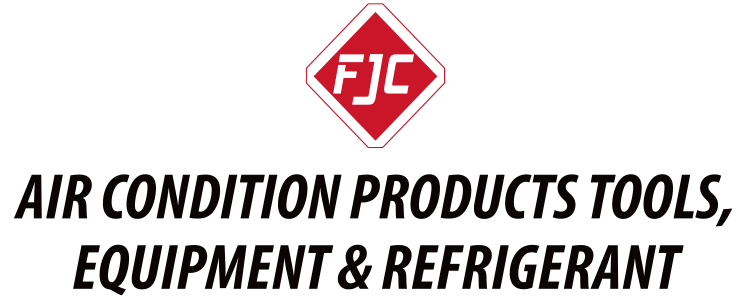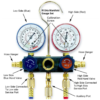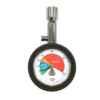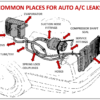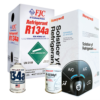Sealing leaks in Automotive A/C
Under normal conditions you should never have to recharge you automotive A/C with refrigerant. The system is, after all, a closed loop through which the refrigerant flows ad infinitum. So what does it mean if your system starts blowing warm air?
If the warming of your AC output has happened slowly over time, it is likely your system has a tiny leak. Because the refrigerant is leaking so slowly, and particularly if your vehicle is older, our first assumption would be the leak is due to rubber components, like O-rings or gaskets which have become dry or have slightly shrunk over time. If this seems to describe your situation, we would recommend a refrigerant with a leak stop designed for this very purpose. This type of sealer works by actually conditioning the rubber components and causing them to swell slightly, which is enough to stop the slow leak of refrigerant and keep your A/C running cold. Sealers frequently are delivered with a dye so that the area of the leak can be visually seen and remedied, if needed. FJC offers two self-charge leak seal options, 9140 R-134a Stop Leak with Red Leak Detection Dye (3 oz) and 618 R-134a Premium Refrigerant with Leak Stop & Visual Red Dye (12 oz).

9140 contains two ounces of additives (Stop Leak and Red Dye) and one ounce of R-134a. In this product, the R-134a is not present so much to charge your system, but is simply the propellent by which the leak seal and dye are introduced into the system.
618 contains two ounces of additives (Stop Leak and Red Dye) and ten ounces of R-134a. In this product, the R-134a acts as a propellent to deliver the leak seal and dye, but also replaces the refrigerant which has leaked from the system.
If you have noticed a sudden change in your A/C output, you may have a leak in a metal component. These leaks can be caused by accidents or other damage, or corrosion from moisture in the system. These type of leaks require a permanent seal in the area of the leak, whether in the condenser, evaporator or any other metal component. Most of these products contain a substance which cycles through the system as a liquid and reacts with moisture present at the area of the leak and congeals, effectively sealing the leak. To use this type of sealer, it is recommended that the system first be fully evacuated , the receiver/drier or accumulator be replaced, and a vacuum is pulled to remove any remaining moisture from the system. If these steps are not followed, the sealer can react with moisture which is in the system causing clumps which can restrict refrigerant flow, clog the receiver drier or accumulator—and even damage any recovery equipment used on the system. FJC sells two unique types of products which contain metal sealers which will NOT CLOG or DAMAGE equipment. We offer 9160 Kwik Seal STOP LEAK with Conditioners 2 oz which must be introduced into the system using a dye/oil injector, and 9165 Kwik Seal Air Conditioning Stop Leak & Conditioners which is an aerosol that R-134a as a propellant . 9165 includes a dispenser in its cap. This is not an area in which you should take chances use FJC products and never worry about any negative effects on your system.

LMK 2020

